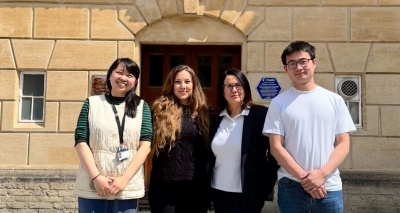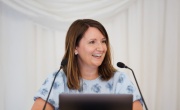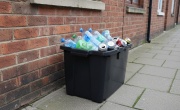Vanden partners with Oxford University to develop terahertz plastic sorting technology
Vanden Recycling supports Oxford University physics research into terahertz spectroscopic imaging that could overcome current limitations in plastic waste sorting systems by identifying black plastics and multilayer packaging.
 Vanden Recycling has announced it is supporting research at Oxford University to develop terahertz spectroscopic imaging for plastic waste sorting - a process that could identify black plastics and multilayer packaging, problematic packaging that is currently rejected by recycling systems.
Vanden Recycling has announced it is supporting research at Oxford University to develop terahertz spectroscopic imaging for plastic waste sorting - a process that could identify black plastics and multilayer packaging, problematic packaging that is currently rejected by recycling systems.
The collaboration with Professor Michael Johnston's physics department, funded by UK Research and Innovation Engineering and Physical Sciences Research Council (UKRI EPSRC), aims to translate laboratory research into commercial sorting solutions.
Beril Baykal Yesilırmak, Vanden's Technical Director, recently toured Oxford's laboratories where researchers are examining how terahertz radiation can penetrate materials that conventional infrared sensors cannot process. The project combines Vanden's global recycling experience with academic expertise to address operational barriers limiting current sorting accuracy.
"We are committed to delivering absolute certainty and transparency to our clients and that means using the best available science to solve real-world recycling problems," said Yesilırmak. "Working with one of the world's most prestigious universities is a major step forward in achieving that goal."
Current sorting technologies using near infrared (NIR) and fourier transform infrared (FTIR) face significant limitations. Carbon black pigments in black plastic absorb infrared radiation, making these items invisible to sensors and often resulting in contamination of other plastic streams or disposal to landfill.
How terahertz technology works
Terahertz spectroscopic imaging operates between microwaves and infrared in the electromagnetic spectrum, using frequencies from 0.1 to 10 THz. When directed at materials, terahertz radiation interacts with molecular structures, with different plastics absorbing and reflecting specific frequencies that create unique spectral signatures.
This non-ionising radiation can penetrate multilayer packaging to identify individual material compositions, a capability that current systems lack. The technology can also detect contaminants and degradation in real-time, offering 3D imaging that supports automated industrial sorting operations.
Unlike conventional infrared systems, terahertz imaging can detect all colours of plastic, including black materials that represent a significant challenge for recyclers. Research indicates this capability could expand the range of materials that facilities can process effectively.
Industry impact and UK recycling targets
The partnership addresses growing demand for improved sorting accuracy as the UK works towards circular economy targets. Current UK plastic packaging recycling rates stand at 55%, with the UK Plastics Pact targeting 70 per cent by 2025.
Vanden's global operations, processing over 100 grades of plastic across six countries, provide the collaboration with extensive insights into commercial recycling challenges. The company's experience with difficult-to-process materials positions it to identify key applications for terahertz technology in real-world settings.
"We are bridging the gap between academic discovery and industry execution," said Yesilırmak. "This isn't just about research, it's about real, practical change."
Improved sorting accuracy could help recyclers accept previously problematic materials, provide manufacturers with higher-quality recycled feedstock, and support compliance with UK Plastics Pact requirements for 71 per cent of plastic packaging to be recyclable.
The technology could standardise high-quality recycled materials and offer advantages for regions building modern recycling infrastructure, particularly where terahertz systems could leapfrog older sorting technologies.
"This is about pushing the boundaries of what's possible," Yesilırmak concluded. "And we welcome collaboration with others who share our ambition to turn today's challenges into tomorrow's solutions."





